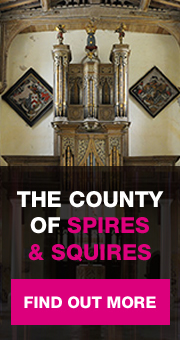The church is set at the far end of the village and from here you get wonderful views over the Welland valley. The building itself represents a splendid silhouette with a splendid tower and an unusually tall crocketed pinnacles that look like inverted ice cream cones. Surrounding it are a vast number of tombstones that remind you that this is quarrying area. The original Norman church built on this eminence was greatly expanded in the 12th and then again in the 13th centuries. It was Richard de Lindon who added the south chapel and Henry Sampson who added the small chancel chapel. The south aisle clearly needed repairing in the 1770’s and this was undertaken by Lord Exeter from nearby Burghley who was Lord of the Manor. It was George IV who elevated the family to become Marquises and it is his well-appointed coat of arms that dominates the nave. Beneath you will find an 18th century double decker pulpit, box and bench end pews, today the home of red needlework hassocks. Note the stone medieval screen to either side of the chancel. The vicar here, at the end of the 18th century, was John Skinner whose son, Lancelot, was Captain of HMS Lutine. The vessel with it’s cargo of gold treasure famously sank off the coast of Flanders in 1799. It’s salvaged bell hangs at Lloyds of London – ringing when there is a disaster or on ceremonial occasions. The Priest House here is a very rare example of an early vicarage dating from the 15th century. It is now owned by The National Trust and contains a small museum.
Please refer to the Glossary for any terms in the text that you are unfamiliar with.







